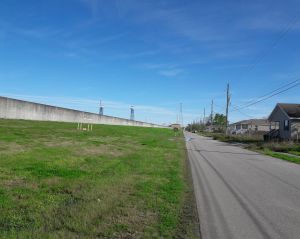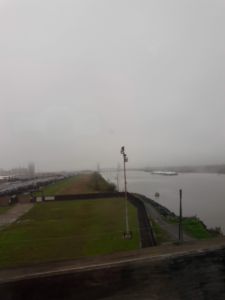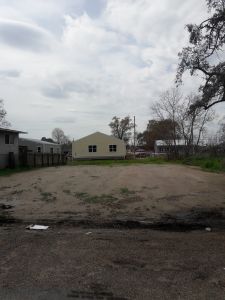Over spring break, I had an incredible opportunity to serve with Campus Ministry to help with the Hurricane Katrina relief in New Orleans. Although 14 years have past since Katrina struck, many sections of the city are still rebuilding.
I remember watching the television coverage when I was about 6 years old when Hurricane Katrina struck in 2005. Aside from mass flooding, evacuations to the Superdome and lack of FEMA support, I didn’t know much about the hurricane or the effect it had on the city.
This all changed upon visiting the Hurricane Katrina museum. The exhibit was incredibly eye-opening and educational. It gave me insight into how and why the damage was so severe, but it also allowed me to hear stories of the local’s harrowing experience riding out Katrina in their homes.
There are many factors that contributed to the catastrophe. The storm cost $161 billion in damages and resulted in the loss of 1,833 lives. Some say that it was the fault of the levees, others blame poor city planning and some said that evacuations were not taken seriously.

I’ve only dipped my toes into all of the issues at hand. Needless to say, I am not at liberty to discuss exactly why the city flooded, but I can tell you that the combination of storm surge and the broken levees is what contributed to the severe flooding. Flood waters were 10, 15 or even 20 feet high. It covered the first or second floors of homes and commercial buildings.
As I learned in the museum, many people who chose to ride out the storm were forced to take refuge in their attics. One hatchet on display explained that women had used it to cut through the roof. She did this to get on higher “ground” away from the rising flood waters and to let rescuers know she was alive.
There was also a pair of jeans with personal identification information written on it with a sharpie. It was a stark reminder about how quickly and real human life can perish. The man who had worn it was biking before the storm hit. I don’t recall why he was biking but I believe he was looking for his wife. Fearful that he would die, he wrote his name, blood type and social security number on his jeans so that he could be identified easily. Thankfully, the man survived.
During our week, we stayed at a volunteer housing organization called “Camp Hope.” Prior to Katrina, it was a Catholic elementary school. The storm completely flooded the first floor and gutted everything. Now it houses volunteers who are serving in New Orleans. The place can house up to 300 people at once, but we were the only group there for the week. The owners, Walt and Mama Lou, were extremely caring people and cooked meals for us every day from scratch.

We worked with the St. Bernard Project, an organization that helps the community affected by natural disasters to rebuild. It was founded shortly after Katrina hit and was named after the parish (similar to a county) that was hit the worst. St. Bernard Project now has numerous sites across the country in Florida, Texas and New Jersey.
There were 11 people total in our group. We were split between two different houses during the week. One group worked on putting up drywall in the houses, while the other group worked on painting and cleaning the house. Our day began at 8:30 and ended at 4:30. It was slow at first, but the days flew by. We quickly formed bonds with the AmeriCorps volunteers who were working with us. These people came from all over the country to spend a year of service with the St. Bernard Project.

It was evident that the neighborhoods that were living and working in were still in recovery mode. The number of empty lots was unbelievable. Some were overgrown with weeds with others were concrete slabs outlined the foundation of a home. It was painful to think that these empty lots and streets were once filled with people with lives of their own. were where people’s homes use to be. A place where people grew up and, where people’s entire livelihood once existed. Now it was merely reduced to nothing. It made me realize that so many things I take for granted, like a community and home, can be lost in the blink of an eye.
Perhaps what was so incredible was seeing the resilience in these communities. Nothing was going to stop them. Not only did they have to deal with contractor fraud when rebuilding, but they were also hit by an EF3 tornado in 2017. Talking to the locals, you would never guess that they had been faced with so many challenging situations when trying to rebuild. Optimism and joy radiated from them when they spoke about the city’s growth. Their eyes were fixated on the future.
I learned a very important lesson that week: to always keep bouncing back no matter what life throws your way.


